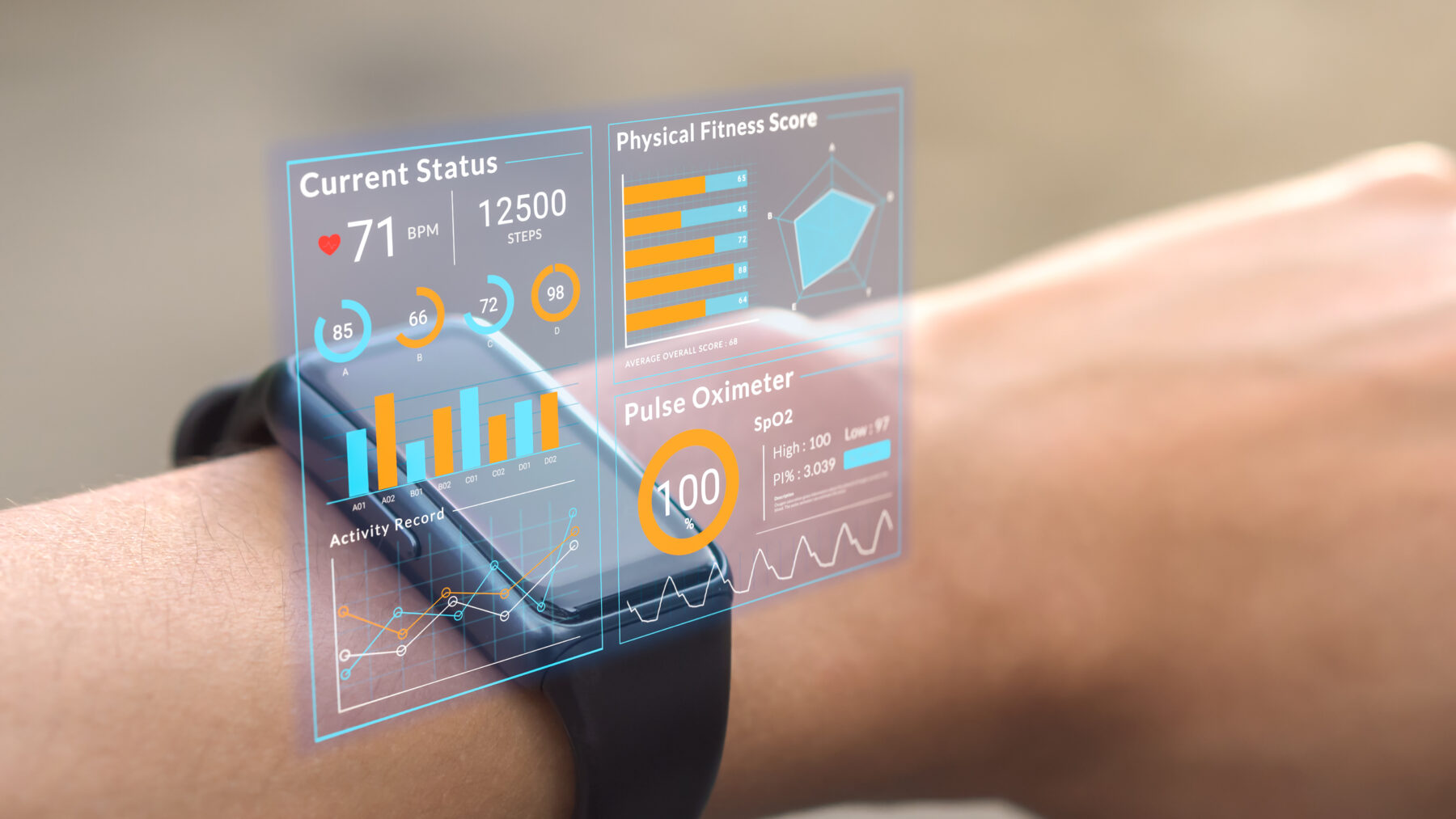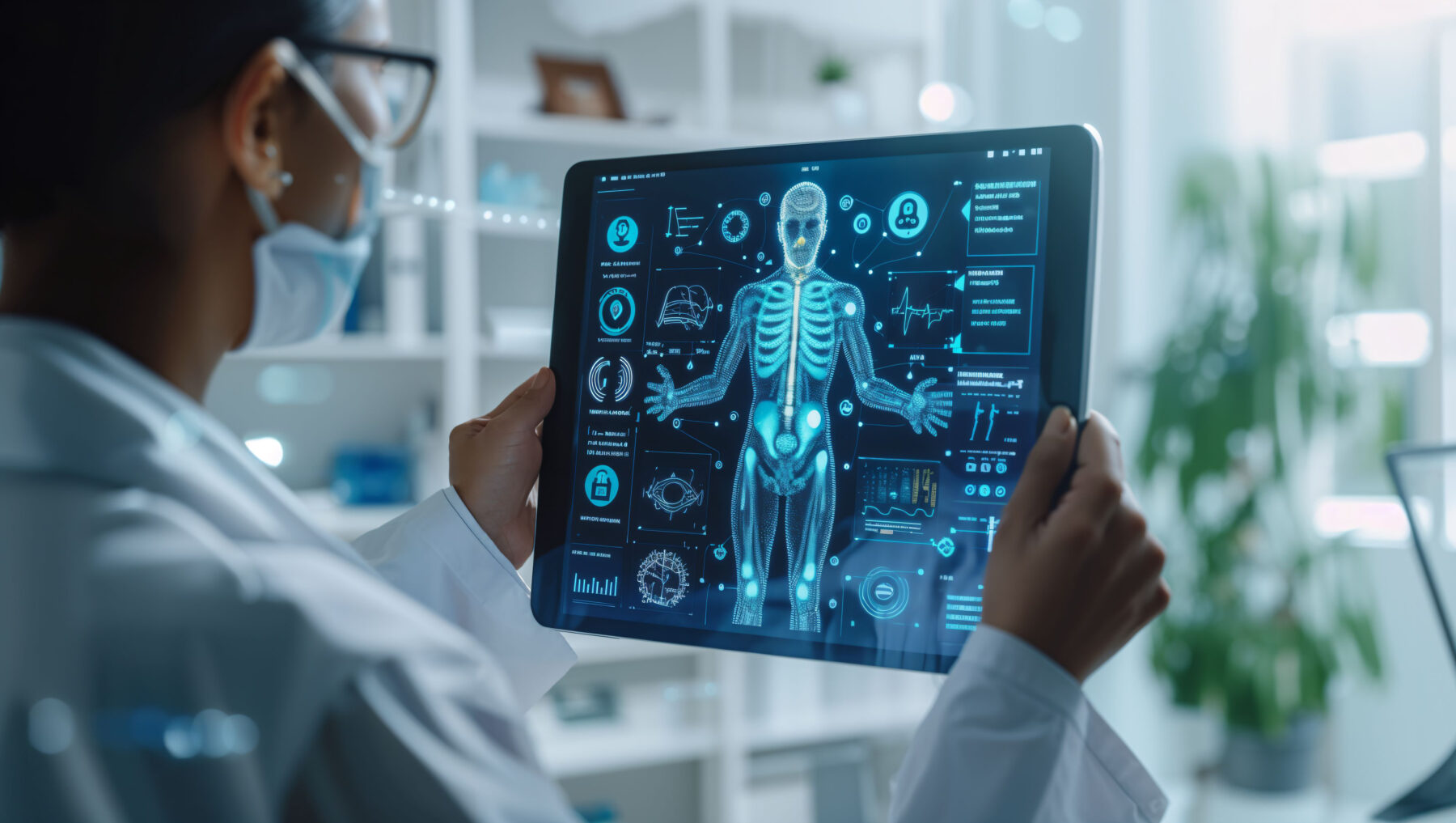Biosensing: Enhancing and Optimising the Patient Journey
We are experiencing a rapid transformation in biosensing technology, with applications expanding swiftly and across industries. Opportunities for this fast-evolving technology have emerged at a particularly critical point for the healthcare sector. Biosensors hold the potential to provide not only life-changing solutions for patients but also to alleviate the burdens of overwhelmed healthcare professionals (HCPs) and providers who grapple with constant time, resources, and financial constraints.
Accelerated by the global pandemic and the demand for remote health monitoring, interest and investment in biosensing has soared over the past years, with this market expected to reach USD 36.7 billion globally by 2026.
While the use of biosensors to support health and wellbeing management is not new, what sets the current context apart is their wider application with other technologies such as AI, Machine Learning, Big Data, and Nanotechnology, spanning across the care continuum. By enhancing the capabilities of biosensors through integration with these other technologies, we can improve data analysis, pattern recognition, and the interpretation of complex biological information. This, in turn, could deliver faster, cheaper, and scalable solutions — from disease prevention and diagnoses to treatment and rehabilitation— both within traditional healthcare settings and the comfort and convenience of patient’s homes.
Building on a foundation of positive experiences
In innovation, there is sometimes a tendency to rush ahead – What will be the next big breakthrough? What can we do that’s new? What novel technologies can we harness? However, before delving into future opportunities for biosensors in healthcare, it is imperative to pause and meticulously consider both existing and new applications. Understanding their impact on the patient, the user journey, and the overall experience of key stakeholders is crucial.
This dual approach aims not only to uncover new opportunities or problems to solve but also to identify and amplify existing positive experiences, thus creating a solid foundation to build upon. After all, just because a technology might be ready doesn’t necessarily mean users will be prepared to embrace it at the same pace. Layering new, novel, or unknown applications or experiences with more familiar ones is key to adopting and retaining new technologies or new applications of existing technologies with users.

So, what are the benefits of biosensors in healthcare?
For patients, biosensors offer a less invasive means of detecting, monitoring, and controlling several health conditions more conveniently and unobtrusively. A patient’s health data can be continuously collected and shared directly with HCPs through wearable devices and mobile equipment. Some applications even enable patients to see their health data in real time, empowering them to take greater control and ownership of their health and work towards building healthier behaviours.
Biosensors also pose an opportunity to improve patient adherence, as routine monitoring can be done from the comfort and convenience of the homes or workplace instead of a hospital or clinic, saving people’s time, effort, and money – this is particularly beneficial for infants, the elderly, vulnerable patients, or those living in more remote areas.
For healthcare professionals, biosensors offer a means of delivering customised healthcare on an unprecedented scale, enhancing the efficiency of diagnosis and treatment, and potentially freeing up HCPs’ time for more critical tasks beyond routine monitoring.
Notably, biosensors offer substantial financial benefits for healthcare providers. They provide a scalable solution with potential cost savings by reducing the number of patients who need to attend clinics for routine testing. This reduces the burden on healthcare resources and addresses the issue of missed appointments and the significant challenge they pose for national healthcare systems worldwide. In the UK, for example, around 1 in 15 appointments were missed in 2021/22, which amounted to 6.4% of booked appointments, or 7.8 million missed appointments in a year.
Current focus on detection and monitoring
Numerous biosensor applications in healthcare focus on detection and monitoring, from daily health and wellbeing surveillance to screening and early detection. Other applications include Therapeutic Drug Monitoring (TDM), which is particularly important for drugs with narrow therapeutic windows.
Using biosensors, such as nano-optical biosensors, for TDM offers advantages such as real-time monitoring, high sensitivity, and specificity for the targeted drug. It can also provide more accurate and timely information about the drug levels in a patient’s system, allowing for better adjustment of drug dosage and optimised therapeutic outcomes while minimising side effects – contributing to developments in personalised medicine.
Enhanced point-of-care diagnosis for improved outcomes
The medical diagnostics landscape is shifting from laboratory-based to point-of-care testing, enabled by the swift development of biosensors that address the need for convenient and personalised diagnostic solutions. Within this area of healthcare, biosensors offer cost-effective, non-invasive, and real-time monitoring capabilities. Before diving into the impact of such technologies on the patient experience, it’s first worth noting the key factors driving growth in point-of-care testing technology.
Globally, healthcare systems will continue to face the challenges of evolving health and lifestyle demographics. In developed economies, an ageing population, the rise of chronic conditions and the prevalence of sedentary lifestyles are key factors, while emerging economies struggle with the demands of an expanding population and the need for low-cost and accessible solutions for resource-constrained regions.
Whilst the impetus for advancements in medical diagnostics is driven by diverse social and economic perspectives across the globe, the overarching goals and applications remain consistent: delivering swift results to enable faster clinical actions.

How will biosensors impact the future patient experience?
Accuracy and speed will enhance personalised healthcare.
The heightened accuracy and sensitivity of biosensors enable the simultaneous detection of multiple biomarkers with a smaller sample quantity than lab-based techniques. This could be particularly beneficial in emergency rooms and care-at-home scenarios, where on-site detection of health problems allows for immediate responses.
These advances allow healthcare providers to build a more detailed picture of a patient’s health, leading to a more personalised healthcare system.
A domain where these advancements could have a significant impact is cancer detection and monitoring. Biosensors could play a crucial role in early cancer detection by identifying specific biomarkers associated with various types of cancer. Moreover, biosensors could be used for monitoring the effectiveness of cancer treatments. The speed of analysis means that test results can be received by HCPs much faster, enabling rapid decisions about treatment pathways for individuals.
Remote patient monitoring provides comfort and convenience.
When combined with telemedicine technologies, biosensors’ non-invasive nature can facilitate enhanced remote patient monitoring. Moving diagnosis from the laboratory bench to the bedside, or even the comfort and convenience of a patient’s home, could reduce the reliance on centralised healthcare settings, staff, and labs and result in more timely and effective treatment regimes, ultimately improving health outcomes for individuals.
As well as early diagnosis, remote monitoring powered by biosensing would be particularly beneficial for patients recovering from surgery or those with chronic conditions, allowing healthcare providers to monitor vital signs and intervene as needed. On a global scale, these technologies could help eliminate barriers to essential healthcare where the geographical distance between patients and healthcare facilities has historically posed a challenge, contributing to the future democratisation of healthcare systems.

Enhancing and optimising patient journeys
Biosensors signal a promising era for healthcare – where prevention, precision, and proactive health management take centre stage.
These advanced technologies are poised to revolutionise infectious disease detection through real-time, highly sensitive monitoring that enables swift and accurate identification of pathogens. Biosensors will also play a pivotal role in transforming the landscape of neurological disorders monitoring, providing continuous and non-invasive insights into brain activity for early detection and personalised treatments. Moreover, these innovative devices are gradually extending their reach to environmental exposure monitoring, allowing individuals to proactively track and manage their exposure to various environmental factors, contributing to a healthier and more informed society.
The opportunities are vast, but for these technologies to succeed, we must understand the wider context and challenges to establish how they can best be applied. As part of a design-led innovation process, we must ensure these technologies serve and are accessible to a range of users, responding to their different needs.
We must look beyond technologies to understand the experience of all stakeholders for the products, services, and systems we design. With a holistic approach to healthcare innovation, our teams are bringing together deep technical knowledge and a thorough understanding of people and context to create biosensor-powered solutions that enhance diagnostics and monitoring, improve patient adherence and enhance the patient journey.
Delving Deeper: The opportunity for biosensors in Therapeutic Drug Monitoring (TDM)
By Randall McDonald, CEO, Tri-Star Design
The Challenge:
Patients suffering from diseases such as cancer and cardiac disease are often treated with drugs with high levels of toxicity. As such, they need to be monitored regularly. Therapeutic Drug Monitoring (TDM) is a procedure where the drug effectiveness and toxicity ratio (Therapeutic Index) are monitored during treatment, and drug concentration adjustments are made to maintain specific target Therapeutic Index values.
The technologies previously used to perform such testing generally included immunoassays, high-performance liquid chromatography, and gas chromatography-mass spectrometry, where the nature of the investigated drugs to be quantified was generally found in human plasma, blood, serum, urine, and saliva. Each of the aforementioned technologies requires specialised personnel and laboratories, and the equipment costs can range anywhere from $20,000.00 to $50,000.00 US dollars. The operational costs and delays associated with obtaining lab results put the need for technological and process improvements at the forefront of healthcare product development.
The Solution:
With the increasing integration of technology within a single integrated circuit, many of the TDM functional requirements can be designed onto a single, small, inexpensive circuit board known today as a biosensor. Biosensors are sensitive and mobile and do not require trained personnel or a special facility to conduct the testing. Integrated wireless technology now provides biosensors access to healthcare cloud-based networks, allowing healthcare providers to monitor patients remotely, thus allowing more expedient and accurate testing.
Like electrical/impedance biosensors, nano-optical biosensors are small, highly integrated devices that measure changes in the properties of light as it relates to the interaction between an analyte and a receptor. Such optical changes include fluorescence, absorption, or refraction index. They also offer a very cost-effective solution with a high degree of sensitivity.
Nano-optical biosensors are generally used in the pharmaceutical and diagnostics industry, biotechnology, and bioscience. We are also seeing immunology, genetics, and microbiology rely more and more on nano-optical biosensors to expand research cost-efficient and effectively.
We anticipate that this expansion will continue, opening up the door to more accurate diagnostics, personalised treatments and better healthcare outcomes for patients.
If you would like to know more about how we can help you in this area, please get in touch.
To learn more about our partnership with Tri-Star Design click here.


